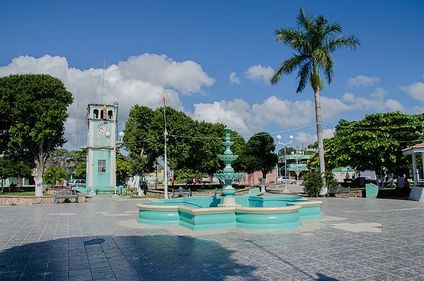Sustainability initiatives
Initiatives by topic
Biodiversity
Belize is a country with a rich variety of wildlife, because of its unique position between both North and South America, and a wide range of climates and habitats for plant and animal life. Belize's low human population and approximately 22,970 square kilometres (8,867 sq mi) of undistributed land makes for an ideal home for the more than 5,000 species of plants, and hundreds of species of animals, including armadillos, snakes, and monkeys.
The Cockscomb Basin Wildlife Sanctuary is a nature reserve in south-central Belize established to protect the forests, fauna and watersheds of an approximately 400 square kilometre area of the eastern slopes of the Maya Mountains. The reserve was founded in 1990 as the first wilderness sanctuary for the jaguar and is regarded by one author as the premier site for jaguar preservation in the world.
Belize is also a leader in protecting biodiversity and natural resources. According to the World Database on Protected Areas, 37% of Belize's land territory falls under some form of official protection, giving Belize one of the most extensive systems of terrestrial protected areas in the Americas. W
Coasts
Around 13.6% of Belize's territorial waters, which contain the Belize Barrier Reef, are also protected. The Belize Barrier Reef is a UNESCO-recognised World Heritage Site and is the second-largest barrier reef in the world, behind Australia's Great Barrier Reef. W
Belize became the first country in the world to completely ban bottom trawling in December 2010. In December 2015, Belize banned offshore oil drilling within 1 km (0.6 mi) of the Barrier Reef.
Despite these protective measures, the reef remains under threat from oceanic pollution as well as uncontrolled tourism, shipping, and fishing. Other threats include hurricanes, along with global warming and the resulting increase in ocean temperatures, which causes coral bleaching. It is claimed by scientists that over 40% of Belize's coral reef has been damaged since 1998. W
Since March 2010, Blue Ventures W has been running volunteer expeditions to Belize to conduct scientific research and educational outreach programmes. The volunteer programme in Belize is located on the Belize Barrier Reef.
The organisation conducts ecological monitoring within the Bacalar Chico Marine Reserve in order to advise the Belize Fisheries Department on management effectiveness. Much of the work in Belize is focused on tackling the invasive lion fish population including creating a market to drive the targeted removal of the lionfish, developing alternative sources of income such as lionfish fin jewellery and ecotourism trips to survey and hunt lionfish. It also carries out community education and outreach activities in Sarteneja, Corozal District, the largest fishing village in Belize.
Community energy
Sustainable energy is the main goal for Belize. In 2003, the Public Utilities Commission implemented a one-year project entitled Formulation for a National Energy Plan for Belize. The project, funded by the United Nations Development Fund, developed a comprehensive National Energy Policy to promote environmentally sound, safe, reliable, affordable energy (National Energy Plan, 2001). In 2011 this plan was updated with the Framework for the National Energy Policy. The Ministry of Energy, Science & Technology, and Public Utilities was founded following recommendations from the framework.
Belize has also taken a role in reducing greenhouse gas emissions. The Belize and Nicaragua Logs Recovery project aims to reduce greenhouse gas emissions and prevent deforestation by salvaging mahogany and other logs in the Belize and Nicaragua Rivers (Legace and Legault International Inc., 2007).
Also, in compliance with the United Nations’ program REDD, Reduction of Emissions from Deforestation and forest Degradation, a national workshop performing with the Ministry of Natural Resources and Environment and the Forest Department of Belize are coordinating efforts to forest management and reduction of deforestation (Protecting Belize and other Central American Countries – Reducing Emissions: REDD, 2010). Along with signing the San Jose Pact, Belize has also been a participant to the Kyoto Protocol. W
Food activism
See also
Interwiki links
Wikipedia: Belize
External links
References Template:Attrib sca ref

